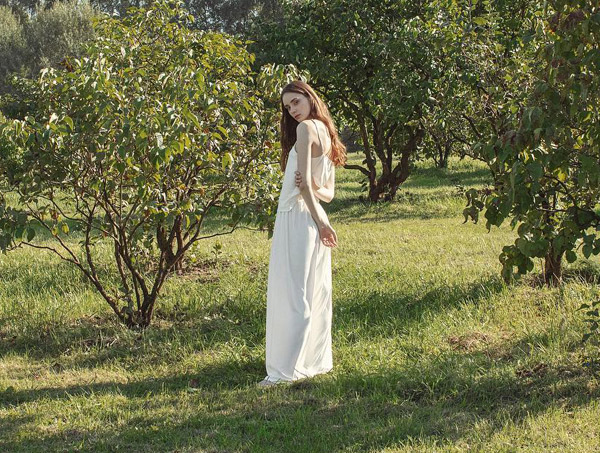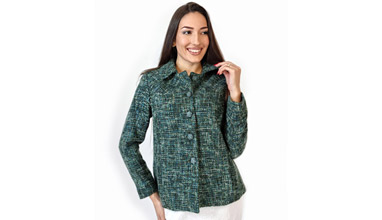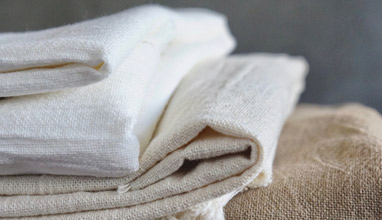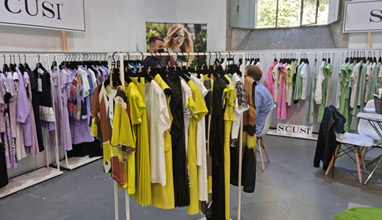Lithuanian Brand Refuses Non-Vegan Silk Materials to Introduce More Compassion in Luxury Sleepwear
As consumers are calling for more cruelty-free options within the fashion industry, Grėtė Švėgždaitė, a Lithuanian luxury sleepwear designer, has created a sleepwear line from a sustainable Naia™ fabric that has all the elements of luxurious silk without actually harming living organisms

Fashion enthusiasts are urging clothing brands to go the cruelty-free route - 95% of shoppers in Britain call for more vegan fashion items while a number of luxury brands have already rejected real fur in their fashion lines. However, up to 1 trillion silkworms are still killed every year to produce silk materials. After learning the cruel practices behind luxury material production, Grėtė Švėgždaitė, a new generation fashion designer based in Lithuania, became adamant to create a cruelty-free and sustainable clothing line that is up to par with the notions of luxury.
The sleepwear brand GRETES focuses on every detail in the production-to-consumer process: starting from fabrics and ending with recycled package boxes, and uses sustainable Naia™ fabric which is vegan and derived from pine and eucalyptus pulp sourced from sustainably managed forests.
Breaking through in the fashion industry with vegan silk-like material
Although GRETES started as a silk accessory brand, it has now expanded into a full sleepwear clothing line made from innovative and cruelty-free cellulosic fiber. For the designer personally, her path in fashion is that of constant discovery and transformation: even if it means a radical change in her profile of work, going from silk to a more sustainable Naia™ fabric, and shifting from hair accessories to sleepwear.
“In the beginning, I launched a brand of silk accessories, which gained traction—I was even invited to the New York Fashion Week—and I naturally thought of delving deeper into the fashion industry. After completing a course on circular fashion at Wageningen University in the Netherlands, I realized the way silk is derived is incompatible with my values—it requires boiling live silkworms still in their cocoons, the industry often uses child labor, many chemicals, and wastes huge amounts of energy and water,” Ms. Švėgždaitė explained.
“I decided to find a fabric that was less harmful to the environment and living organisms but had all the qualities of silk, meaning it had to be non-allergenic and breathable. I understood how much effort it would take to be vegan and sustainable, and while I still haven’t achieved full sustainability, I am always trying to minimize harm. After about a year of work, I had a Naia™ fabric from Italy in my hands, which, besides being vegan, also ideally fit my standards of quality,” she explained.

On a way to become a fully sustainable luxury brand
45% of consumers see an environmentally responsible reputation as a primary motivator for making a purchase, and an increasing number of fashion companies are pushing for more sustainability.
“I strive to follow green practices whenever possible. However, I still know that, for example, by delivering packages by air and using traditional materials for things like buttons and labels I cannot claim complete sustainability,” the designer added. “I am honest about that and what can be done at this point, and my goal is to do the best possible.”
The Naia™ fabric has several advantages over silk in regards to sustainability—it does not contain any hazardous chemicals for humans or nature, has lower tree-to-fiber carbon and water footprint, and is fully biodegradable. While some impact on the environment is still made, Ms. Švėgždaitė is constantly communicating with innovators, and factories, attending exhibitions and trying to find the most environmentally as well as human and animal-friendly materials on the market.
“While GRETES is still on its way to becoming a 100% sustainable brand, I do not believe that living things should be harmed to produce an inanimate object. Therefore, I am constantly exploring how to reduce environmental harm by learning about alternative materials and practices,” the designer noted.
Hits: 4737 | Leave a comment













